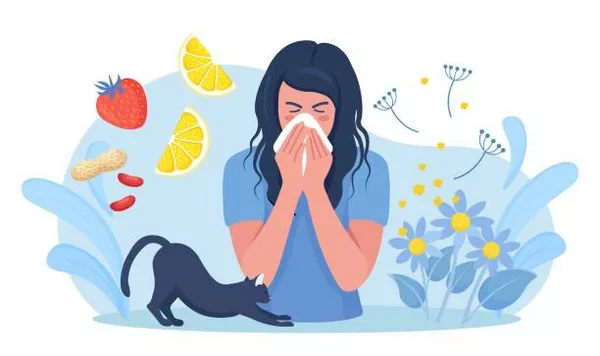For individuals grappling with allergies, location can significantly impact their quality of life. According to a recent report by the Asthma and Allergy Foundation of America (AAFA), certain regions across the United States are particularly challenging for allergy sufferers. While allergies affect millions of Americans nationwide, some areas experience more severe symptoms than others, especially during the spring season.
Dr. William Reisacher, an otolaryngic allergist at Weill Cornell Medicine and NewYork-Presbyterian, highlights the prevalence of allergies, affecting approximately one-quarter of the population. Over-the-counter medications provide relief for many allergy sufferers, but lifestyle modifications can also be beneficial, particularly for those residing in allergy hotspots.
Kenneth Mendez, president and CEO of AAFA, emphasizes the importance of proactive management strategies, advising individuals to initiate allergy treatments before the onset of peak pollen season. By taking preemptive measures, individuals may better alleviate symptoms associated with seasonal allergies.
The 10 Worst Cities for People With Allergies
The AAFA evaluated data from the top 100 most-populated metropolitan areas in the U.S., considering factors such as pollen scores, over-the-counter allergy medication usage, and the availability of allergy specialists. Based on their analysis, the following cities emerged as the most challenging places to live with allergies:
Wichita, Kansas
Virginia Beach, Virginia
Greenville, South Carolina
Dallas, Texas
Oklahoma City, Oklahoma
Tulsa, Oklahoma
Richmond, Virginia
Des Moines, Iowa
Raleigh, North Carolina
Fayetteville, Arkansas
Understanding Allergy Season
Allergy seasons vary depending on geographical location, with tree pollen typically triggering symptoms from late February through May in many regions. As temperatures rise in the spring, trees release pollen, exacerbating allergy symptoms for affected individuals. Moreover, grass pollen becomes a predominant allergen during the summer months, further contributing to seasonal allergies.
Recent trends indicate an earlier onset of tree pollen season compared to previous decades, with pollen release commencing approximately 20 days earlier. In 2024, milder weather conditions in February led to a two-week earlier start to pollen release, accompanied by higher-than-average pollen counts during that period, as reported by the National Park Service.
Intensifying Allergy Symptoms
Elevated pollen counts and prolonged allergy seasons may exacerbate symptoms, particularly for individuals with allergic asthma. Springtime allergies can trigger asthma symptoms, posing additional challenges for affected individuals. Furthermore, oral allergy syndrome (OAS) may manifest during this period, causing allergic reactions in the mouth or throat when consuming certain fruits, vegetables, or nuts. OAS occurs due to similarities between pollen proteins and those found in specific foods, leading to immune system confusion and subsequent allergic responses.
As allergy seasons become more prolonged and intense, proactive management strategies and heightened awareness of potential triggers are essential for minimizing discomfort and enhancing quality of life for allergy sufferers nationwide.


